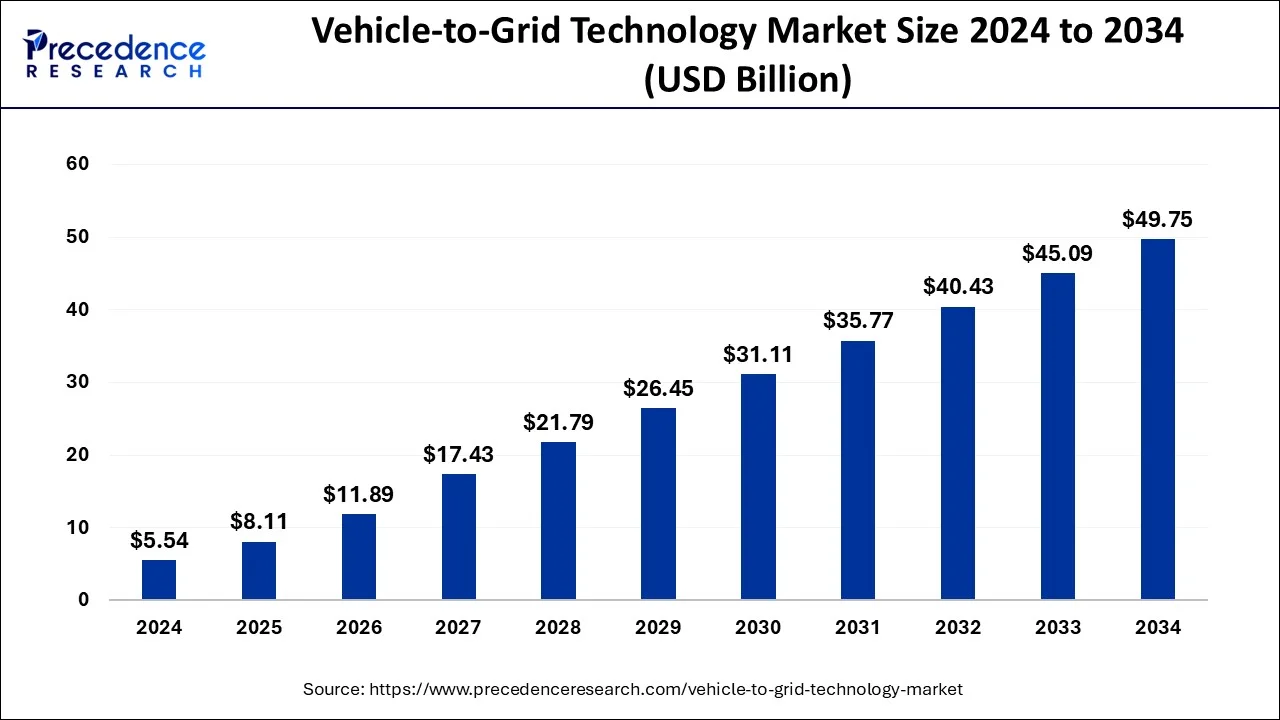The global vehicle-to-grid technology market was valued at USD 5.54 bn in 2024 and is expected to reach USD 49.75 bn by 2034, growing at a CAGR of 28.13%.
Vehicle-to-Grid Tech Market Key Takeaways
- Europe holds the largest market share of around 35.80% in 2024.
- The electric vehicle supply equipment segment accounted for 83.13% of the revenue in 2024.
- Battery electric vehicles (BEVs) dominated the market with a 63.89% share in 2024.
- The plug-in hybrid electric vehicles (PHEVs) segment is expected to grow at a strong CAGR of 28.59%.
The vehicle-to-grid (V2G) technology market is poised for significant growth, driven by the increasing adoption of electric vehicles (EVs) and the need for sustainable energy solutions. This technology enables EVs to not only charge but also discharge power back to the grid, improving energy efficiency and supporting grid stability. With governments and industries pushing for cleaner energy alternatives, the demand for V2G technology is rapidly rising. The market is expected to grow substantially over the next decade, driven by innovations in EV infrastructure and energy storage systems.
Sample Link: https://www.precedenceresearch.com/sample/1019
Market Scope
| Report Coverage | Details |
| Growth Rate from 2024 to 2033 | CAGR of 28.13% |
| Market Size in 2023 | USD 3.78 Billion |
| Market Size by 2033 | USD 45.09 Billion |
| Largest Market | North America |
| Base Year | 2024 |
| Forecast Period | 2025 to 2034 |
| Segments Covered | By Component Type, By Application Type |
| Regions Covered | North America, Europe, Asia-Pacific, Latin America, and Middle East & Africa |
Key Drivers
The vehicle-to-grid (V2G) technology market is expanding rapidly, driven by the rise of electric vehicles and the need for more efficient, sustainable energy systems. V2G allows EVs to both charge and return energy to the grid, enhancing energy efficiency and supporting grid stability. With the growing global demand for clean energy solutions, the market is expected to experience significant growth in the coming years, powered by advancements in energy storage and EV infrastructure.
Opportunities
- Growth in electric vehicle (EV) adoption provides a significant market opportunity for vehicle-to-grid (V2G) technology.
- Increased government support and incentives for clean energy solutions will drive demand for V2G infrastructure.
- Advancements in energy storage systems and smart grid technologies create opportunities to integrate V2G more effectively.
- Growing focus on energy efficiency and grid stabilization opens up new applications for V2G technology in various sectors.
- Rising demand for sustainable and renewable energy solutions presents a chance for V2G to play a critical role in reducing emissions.
Challenges
- High installation and maintenance costs for V2G infrastructure can deter widespread adoption.
- Technical challenges related to integrating V2G with existing power grids may slow market growth.
- Consumer reluctance to use EVs as energy sources for the grid due to concerns about battery wear and longevity.
- A lack of standardized regulations and policies across regions can create uncertainty for stakeholders.
- The complexity of coordinating between various stakeholders (e.g., utility companies, automakers, and consumers) can hinder market development.
Regional Insights
Market Key Players
- Nissan Motor Corporation
- Mitsubishi Motors Corporation
- NUVVE Corporation
- ENGIE Group
- OVO Energy Ltd
- Groupe Renault
- Honda Motor Co., Ltd.
Recent News
Nissan has announced plans to introduce affordable bi-directional charging on selected electric vehicles starting in 2026, aiming to enhance the accessibility of vehicle-to-grid (V2G) technology In California, a new law permits electric vehicle owners to utilize their cars as “mini power plants” through bidirectional charging, potentially reducing energy bills and stabilizing the power grid.
Market Segmentation
By Component Type
- Smart Meters
- Electric Vehicle Supply Equipment (EVSE)
- Software
- Home Energy Management (HEM)
By Application Type
- Battery Electric Vehicles (BEVs)
- Fuel Cell Vehicles (FCVs)
- Plug-in Hybrid Electric Vehicles (PHEVs)


